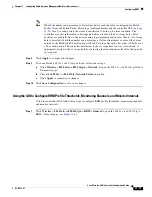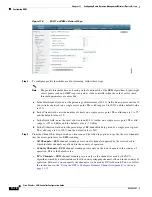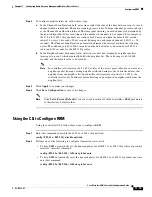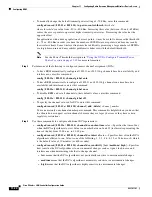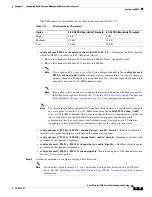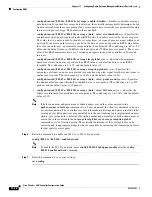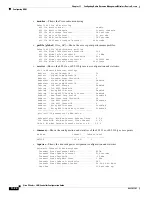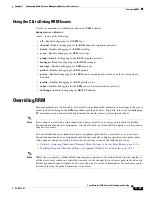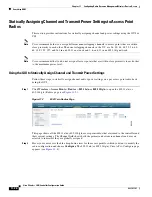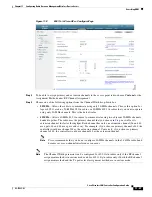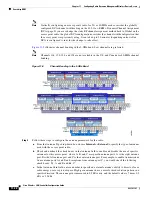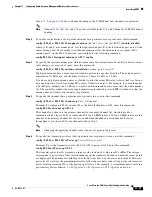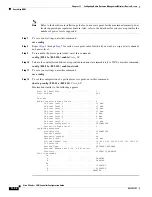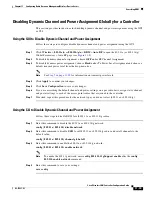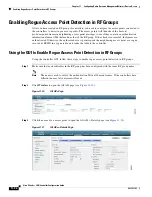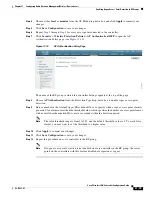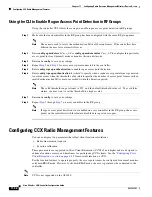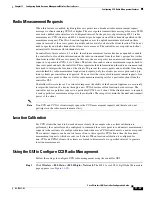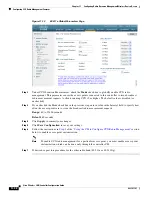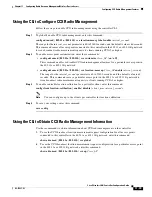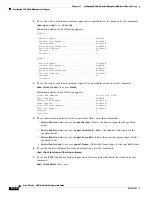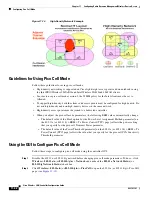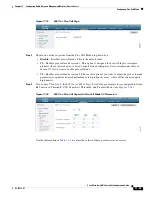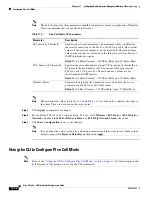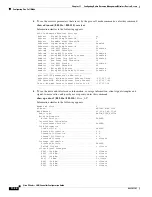
11-31
Cisco Wireless LAN Controller Configuration Guide
OL-17037-01
Chapter 11 Configuring Radio Resource ManagementWireless Device Access
Overriding RRM
shows channel bonding in the 5-GHz band. Low channels are preferred.
Note
Channels 116, 120, 124, and 128 are not available in the U.S. and Canada for 40-MHz channel
bonding.
Step 3
To enable or disable the use of specific antennas for a particular access point, enter this command:
config
{
802.11a
|
802.11b
}
11nsupport antenna
{
tx
|
rx
}
Cisco_AP
{
A
|
B
|
C
} {
enable
|
disable
}
where A, B, and C are antenna ports. A is the right antenna port, B is the left antenna port, and C is the
center antenna port. For example, to enable transmissions from the antenna in access point AP1’s
antenna port C on the 802.11a network, you would enter the following command:
config 802.11a 11nsupport antenna tx AP1 C enable
Step 4
To specify the external antenna gain, which is a measure of an external antenna’s ability to direct or focus
radio energy over a region of space, enter this command:
config
{
802.11a
|
802.11b
}
antenna extAntGain
antenna_gain
Cisco_AP
High-gain antennas have a more focused radiation pattern in a specific direction. The antenna gain is
measured in 0.5 dBi units, and the default value is 7 times 0.5 dBi, or 3.5 dBi.
If you have a high-gain antenna, enter a value that is twice the actual dBi value (refer to the
Cisco Aironet
Antenna Reference Guide
for antenna dBi values). Otherwise, enter 0. For example, if your antenna has
a 4.4-dBi gain, multiply the 4.4 dBi by 2 to get 8.8 and then round down to enter only the whole number
(8). The controller reduces the actual equivalent isotropic radiated power (EIRP) to make sure that the
antenna does not violate your country’s regulations.
Step 5
To specify the channel that a particular access point is to use, enter this command:
config
{
802.11a
|
802.11b
}
channel ap
Cisco_AP channel
Example:
To configure 802.11a channel 36 as the default channel on AP1, enter this command:
config 802.11a channel ap AP1 36
.
The channel you choose is the primary channel (for example, channel 36), which is used for
communication by legacy 802.11a radios and 802.11n 20-MHz radios. 802.11n 40-MHz radios use this
channel as the primary channel but also use an additional bonded extension channel for faster
throughput, if you chose 40 for the channel width in
Note
Changing the operating channel causes the access point radio to reset.
Step 6
To specify the transmit power level that a particular access point is to use, enter this command:
config
{
802.11a
|
802.11b
}
txPower ap
Cisco_AP power_level
Example: To set the transmit power for 802.11a AP1 to power level 2, enter this command:
config 802.11a txPower ap AP1 2
.
The transmit power level is assigned an integer value instead of a value in mW or dBm. The integer
corresponds to a power level that varies depending on the regulatory domain in which the access points
are deployed. The number of available power levels varies based on the access point model. However,
power level 1 is always the maximum power level allowed per country code setting, with each successive
power level representing 50% of the previous power level. For example, 1 = maximum power level in a
particular regulatory domain, 2 = 50% power, 3 = 25% power, 4 = 12.5% power, and so on.

